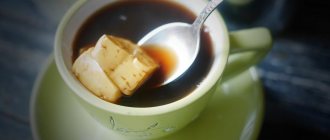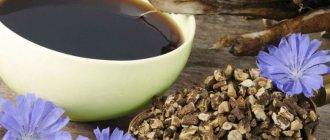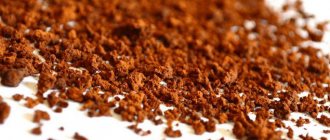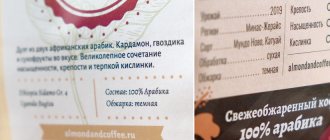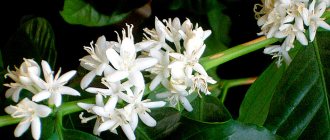Cuba is famous not only for rum and cigars, but also for delicious coffee. Cuban coffee is produced much less than Colombian and Brazilian coffee. The drink is popular due to its taste. True coffee lovers prefer it. It is distinguished by its strong strength and rich aroma, invigorates and energizes. Therefore, Cuban coffee is valued all over the world.
How the drink came about
Coffee beans were first imported from Haiti in the eighteenth century. At that time, serious tree care was organized and strict control over product output was carried out. Thanks to the creation of ideal conditions and a warm, humid climate, the bushes began to produce a large harvest of grains.
Over time, the volume of coffee plantations grew and in the nineteenth century, Cuba occupied a leading position in the export of this product. The Cuban drink has a pronounced rich taste, slight sourness, and contains chocolate and tobacco notes.
Turkino
Turquino is one of the best varieties of Cuban coffee, which is very rare. Connoisseurs love this coffee for its rich taste, in which notes of pepper, tobacco and cocoa are clearly visible. This variety is ideal for brewing in a Turk and preparing in coffee machines.
It is very difficult, almost impossible, to try Cuban coffee in its pure form outside the country. Qubita is always represented by a mixture of varieties, but despite this, it is highly valued and has the reputation of an invigorating and piquant drink.
Cuban coffee is sometimes even compared to the famous Blue Mountain, and there are reasons for this. Coffee beans grown in Cuba, when roasted, are very similar to Jamaican beans, they are just as beautiful, smooth and have a similar veined shape. You can also find similar notes in the taste, but Cuban coffee is denser, less varied and has a tobacco flavor.
Publication date: The best varieties
Cuban coffee Cubita (Cubita)
Today, Cuba supplies the coffee market with dozens of varieties of Arabica beans. The drink is called Qubita, which has many different varieties. The best are considered:
Altura
Popular not only among local residents, but also outside the country. Cubans value it for its high caffeine content and rich aroma. The finished drink is quite thick and has some bitterness and astringency in its taste.
Maragogyp
One of the best Cuban varieties. Refers to high quality drinks. Brewed coffee has a strong aroma and thick consistency. The invigorating drink has a burning aftertaste, which adds originality to it.
Guantanamo
The famous Arabica variety grows in the Sierra Maestro mountain region in the city of Guantanamera. Similar varieties are Granma and Holguin, which are named after the places where they are grown. These varieties lack sourness. The prepared coffee has the aroma of tobacco and has a burning tart taste. Cubans value these varieties for their strong strength, which is expressed in the drink, which is achieved due to the high caffeine content.
Cuban coffee - features of preparing the drink
The best Cuban coffee has several differences compared to similar drinks. So, these include:
- The strongest degree of roasting of the grain;
- Collection of raw materials only in Cuba;
- The finished drink has a bitter taste, which is why it is recommended to add sugar to it, since not everyone will be able to appreciate the delicacy without it;
- The drink portion is small;
- It must be washed down with cold water, as it is quite strong.
In order to prepare real Cuban coffee, it is important to follow some rules.
- You need to grind the grains immediately before preparing the invigorating delicacy. It is also important that only the portion required for a single brew is ground. You should not grind the grains for use, as some of the aroma may leave them and the finished drink will no longer be able to convey the full taste;
- It is better to use cane sugar rather than regular sugar;
- In a geyser coffee maker you can prepare the perfect Cuban coffee with the taste it really should have.
Read also: Which variety of cucumbers is better
For Cubans, brewing coffee is a ritual that they never break. The cooking process is influenced by several factors:
- You only need to cook with a good attitude;
- Correct choice of cooking time;
- Drinking a drink with friends during intimate conversations.
If you take these factors into account, you can prepare a real Cuban delicacy.
After the drink is prepared, it must be immediately poured into cups. In Cuba, the cups are preheated in an oven. This can also be done by rinsing the glass with boiling water.

Cuban Serrano coffee has a pleasant soft taste with a slight sourness
The drink is served in small cups, as it is important to drink it while still hot. Also, the portion is small because the delicacy contains a large amount of caffeine, which can harm the body. This is why some people will have to give up the drink. After all, coffee can affect blood pressure, increase heart rate and even harm the unborn child.
The best varieties of Cuban coffee
Among the many varieties of the drink, there are several that consumers particularly like:
- Altura is a tart and very strong drink containing a huge amount of caffeine;
- Cuban Serrano coffee has a soft, pleasant taste with a slight sourness. This drink is preferred in European countries;
- Trinidad – medium astringency with a rich aroma;
- Granma has a tobacco smell;
- Guantanamo has a slight acidity and a good tart flavor;
- Coffee Cuban rum. The aroma of real Cuban rum goes well with coffee and gives its fans an amazing taste.
Cuban coffee will be appreciated by true connoisseurs of strong drinks with a tart taste and rich aroma. Cuban coffee, reviews of which are positive, leaves only the best memories. Once you try it, you will never be able to forget the taste of this amazing delicacy. Having tried it in Cuba, you will be looking for similar drinks when you arrive home. Very often, after the first use, consumers purchase it for quite a long time. See you again!
How to brew real Cuban coffee
Now you can find many different recipes for making the drink. But, following the basic rules, it should be: very hot, very sweet and strong. Cubans prepare it according to the principle of “more coffee, less water.” The caffeinated Cuban invigorating drink is quite thick. For this recipe, only grains that grow on Cuban plantations are used.
In order to brew real Cuban coffee, you must follow some rules:
- Grains must be ground before cooking;
- The drink will turn out very tasty and aromatic if you brew it in a geyser coffee maker (the beans are prepared under high steam pressure);
- To reveal all the qualities of coffee, it is better to add cane sugar;
- The beans should not be freshly roasted;
- You need to brew the drink with a good positive attitude.

Cuban coffee recipe
If you don’t have a geyser coffee maker, brew the drink in a Turk. You will need the following ingredients:
- Two teaspoons of coffee beans;
- Two hundred milliliters of water.
- A tablespoon of cane sugar;
- Rum to taste.
Grind the grains before starting cooking. Mix coffee and sugar in a pot, pour in water and bring to a boil on the stove. It is better to cook over low heat; when the mixture begins to boil, remove the Turk from the stove. Wait a few minutes for the grains to settle. Now you can add rum as desired or replace it with cognac, which will affect the taste of the coffee. The real drink in Cuba is prepared with rum, served in small cups and drunk very hot.
Cuban coffee
Residents of Liberty Island love strong roasted coffee, like in Italy or Spain, the beans are ground very finely. Because of the chicory and chickpeas, the finished drink is very bitter, so it is always drunk with sugar.
Cuban coffee - café cubano or cafecito - is famous all over the world. This is an ordinary espresso brewed in a geyser coffee maker (Moka pot or, as the Cubans themselves call it, cafetera) over an open fire. Quota coffee most often contains additives, but stores also sell “pure” brands without additives.
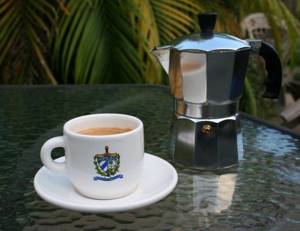
A geyser coffee maker is the main method of preparing coffee in Cuba.
Cubans brew espresso very strong, and always drink it with sugar, and the drink is often sweetened in the coffee maker. Black coffee is an indispensable attribute of any friendly visit, celebration, official or informal meeting. It is usually served in small elegant cups and eaten with crackers or bread.
A distinctive feature of cafecito is the lush foam whipped from a mixture of sugar and freshly brewed coffee (1:1 proportions).
No matter how poor a family is, it will definitely have enough money for a coffee maker. But coffee is not always brewed at home - you can buy it literally on every corner or receive it as a treat when visiting.
Cubans joke that they have learned to moderate their hospitality and “coffee extravagance” in the face of limited supplies. If a guest comes to the house, the wife asks her husband:
- Darling, should I make some coffee?
And then two answers are possible. If we are talking about a stranger or a friend whose friendship is not very valued, the owner of the house answers:
- Of course, woman, of course.
But if a close friend or relative drops by, then the head of the family says:
- Of course, woman, of course.
Cuban green coffee
The first coffee plantations appeared in Cuba. But now it is almost impossible to purchase due to the introduction of American sanctions. There are several reasons why green coffee is very difficult to find:
- Very small volumes of products. Despite this, local authorities want to resume production processes;
- Due to the imposition of sanctions by America, many countries have lost economic ties with Cuba;
- Only Russia and China are considered the main consumers of Cuban coffee.
Arabica grows in Cuba, and its quality is no worse than that of other world producers. It does not have a strong sourness, like American varieties. Now not everyone can afford to drink a real and high-quality Cuban drink.
How to drink strong coffee correctly
Cuban coffee should be poured straight from the coffee maker into small cups. They need to be preheated: this can be done in a special oven, or you can pour boiling water over them several times.
The drink is drunk very hot, which is why small portions are needed. This type of coffee contains a large dose of caffeine, so you should be careful when consuming it and not exceed a small single serving. Elderly people and people suffering from heart and vascular diseases should be especially careful.
It is not customary to add milk, rum or liqueur to Cuban coffee. The drink itself has a rich taste and sufficient sweetness, so it does not need any additions. You can drink it with cold water or rum.
Connoisseurs of this tropical drink will appreciate its quality. According to consumer reviews, Cuban coffee is one of the best among a huge range of products. Those who have tried it at least once cannot forget this magical aroma and rich taste. If this happened outside their home country, upon arrival, newly-minted coffee connoisseurs are looking for an opportunity to buy real Cuban coffee beans and drink this piquant drink at home. Fortunately, modern delivery services allow you to do this. Try Cuban coffee once and you will not be able to resist this drink with character! It will give you unsurpassed taste and aroma and will charge you with energy for the whole day.
Price
The drink has an affordable price for everyone. A package weighing one kilogram can be bought for one and a half thousand rubles. The price of fresh harvest may be higher.
Fans of this amazing drink will be pleased with its quality. Cuban coffee varieties are considered one of the best. Trying it for the first time, many remain fans for life. Tourists always bring cigars, Cuban rum and, of course, coffee from Cuba. Cuba supplies coffee blends to the world market, so you can try it in its pure form only within the country.
Liberty Island and coffee
Cuba's coffee plantations date back to the mid-18th century, like most Caribbean countries. It started with Dominican grains, which entered the country around 1748. The first coffee planting then appeared on the outskirts of Havana. With the arrival of the French, who were looking for a quiet haven and salvation from the revolutionary events of their homeland, the coffee business took off sharply. Those who arrived knew a lot about coffee and its cultivation. They selected the most suitable areas of the country and developed extensive coffee plantations on them. At the beginning of the 19th century, Cuba became a world leader in the export of aromatic grains.
After a number of geopolitical changes, Liberty Island retained its independence and its coffee.
In quantitative terms, Cuba can no longer compete with those countries that supply beans on an industrial scale, but the quality of Cuban coffee has remained unchanged.
Modern local production covers the west and center of the country, located mainly in mountainous areas. Many private family farms are engaged in cultivation and collection. Their products are bought by a state concern that supplies coffee to foreign markets. Grains intended for export go through several stages of state control, at which everything that does not meet one of three basic standards is mercilessly rejected. Then, from the selected products, a wide variety of mixes and blends are made, which are sold to the world market.
All export coffee has one brand - Kubito, and the beans are sold under this name in our stores. Cuba does not export single-origin varieties; only blends are sold.
The humid climate, the influence of oceanic winds, and the composition of the soil give coffee connoisseurs the opportunity to enjoy strong drinks with virtually no sour notes. Cuban coffee is dominated by accents of chocolate, tobacco and nuts, and as an original addition that cannot be confused with anything else, hot notes of pepper. They may be brighter or less pronounced in different mixtures, but some pungency is inherent in all varieties.
In Cuba itself you can try both single-origin and local blends. Tourists willingly buy beans as souvenirs and gifts, unanimously asserting that such coffee cannot be purchased outside the country’s borders.
